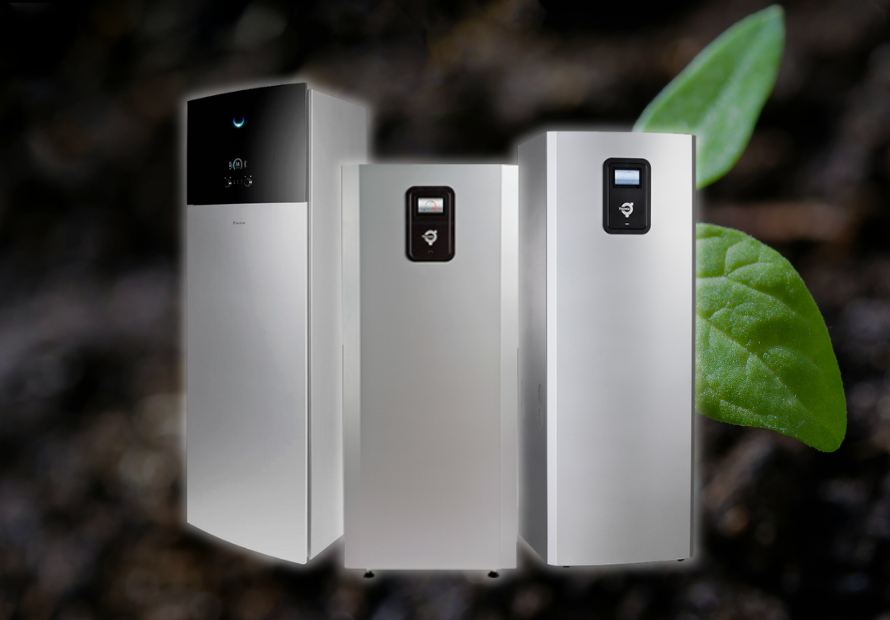20.03.2024
IV. Heat pumps - ground to water type heat pumps, their advantages and disadvantages

The heat needed for heating and hot water can be produced in different ways. While previous articles have looked at heat pumps that extract the heat they need from the outside air, today we will go further down and look at ground-to-water heat pumps that extract the heat they need from the ground. Similar to air-to-water heat pumps, these units combine most of the elements needed for a heating system in one place.
Heat can be extracted from the ground in mainly two ways. The simplest of these, if the total area of the site allows, is to install a ground loop horizontally at a depth of 1 to 1.5 metres, depending on the composition of the soil on the site. Despite the relatively large area required for this type of system, excavation and pipe laying are simpler and more economical. If the ground-source heat pump is to be installed in a small area (e.g. a commercial building or an apartment building with a small land area), the ground heat can be extracted by one or more ground probes buried at a depth of 60 to 85 metres. In this way, the required heat can be extracted from a much smaller area, but with a more complex installation. As for the units themselves, their installation is not radically different from that of an air-to-water heat pump indoor unit, with a ground loop instead of refrigerant pipes.
Ground-source heat pumps have several advantages:
- Unlike other types of heat pumps, ground source heat pumps will continue to operate reliably in all kinds of outdoor conditions. At low temperatures, it will continue to operate with similar efficiency compared to heat pumps that extract heat from outside air. Accordingly, most ground source heat pumps are able to provide higher flow temperatures even at low outdoor temperatures;
- Hot water production: A ground source heat pump is also capable of producing hot water, similar to an air-to-water unit. They are available with an integrated hot water tank or with the possibility of connecting a separate hot water boiler;
- Ground source heat pumps can also be combined with other heating sources, with a multi-purpose tank or within a hybrid heating system;
- The control of ground source heat pumps is simple and easy to understand;
- It is possible to cool the house in summer, depending on the installation of the bypass and the overall heating system. Ground source heat pumps provide cooling in two ways: passively, when the naturally available coolness of the ground is used without the aid of a compressor, or actively, when the heat pump compressor is operated in reverse mode.
The main disadvantage of ground source heat pumps lies in the time-consuming installation compared to other types of heating and, in particular, to air-to-water and air-to-air heat pumps. Excavation work is time-consuming and the total installation costs are higher than for air-to-water and especially air-to-air heat pumps.
Despite the considerable amount of work required for the installation of ground source heat pumps and the higher initial costs, ground source heat pumps remain one of the best heating solutions as a long-term heating solution, especially for radiator heating systems or for sites undergoing heating system replacement.
Back to news